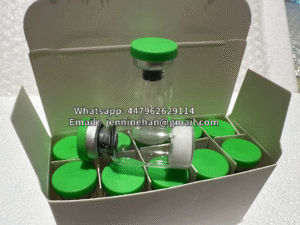
: A Comprehensive Product Overview
Introduction
Retatrutide 10mg is a novel peptide-based therapeutic agent that has garnered significant attention in the fields of metabolic disorders, weight management, and endocrinology. As a triple agonist targeting the glucagon-like peptide-1 (GLP-1), glucose-dependent insulinotropic polypeptide (GIP), and glucagon receptors, Retatrutide offers a multifaceted approach to improving glycemic control, promoting weight loss, and enhancing metabolic health. This article provides an in-depth analysis of Retatrutide 10mg, covering its mechanism of action, clinical benefits, dosage recommendations, safety profile, and future potential.
Mechanism of Action
Retatrutide’s unique mechanism stems from its ability to simultaneously activate three key receptors involved in metabolic regulation:
-
GLP-1 Receptor Agonism – Enhances insulin secretion, suppresses glucagon release, slows gastric emptying, and promotes satiety.
-
GIP Receptor Agonism – Improves insulin sensitivity and supports fat metabolism.
-
Glucagon Receptor Agonism – Increases energy expenditure by stimulating hepatic glucose production and lipolysis.
This triple-action approach differentiates Retatrutide from single- or dual-agonist therapies (such as semaglutide or tirzepatide), potentially offering superior efficacy in weight loss and glucose control.
Clinical Benefits
1. Weight Loss Management
Clinical trials have demonstrated that Retatrutide 10mg induces significant and sustained weight loss. In a Phase 2 study, participants receiving Retatrutide achieved an average weight reduction of up to 24% of their initial body weight over 48 weeks—a result surpassing those seen with GLP-1 agonists alone.
2. Glycemic Control in Type 2 Diabetes
Retatrutide improves HbA1c levels by enhancing insulin secretion while minimizing hypoglycemia risk due to its glucose-dependent action. Studies show reductions in HbA1c by 1.5% to 2.5%, making it a potent option for diabetes management.
3. Cardiovascular and Metabolic Benefits
Emerging data suggest Retatrutide may improve lipid profiles, reduce inflammation, and lower cardiovascular risk factors, positioning it as a promising therapy for metabolic syndrome.
Dosage and Administration
-
Recommended Starting Dose: 2mg once weekly, with gradual escalation to 10mg based on tolerability.
-
Maintenance Dose: 10mg weekly for optimal metabolic and weight loss effects.
-
Administration: Subcutaneous injection (similar to other GLP-1-based therapies).
Patients should follow medical supervision during dose titration to mitigate gastrointestinal side effects (e.g., nausea, diarrhea).
Safety and Tolerability
Retatrutide is generally well-tolerated, with the most common adverse effects being mild to moderate and transient:
-
Gastrointestinal: Nausea (~20%), vomiting (~10%), diarrhea (~15%)
-
Injection-site reactions (rare)
-
No significant cardiovascular risks reported in trials
Contraindications include a history of medullary thyroid carcinoma (MTC) or multiple endocrine neoplasia syndrome type 2 (MEN 2).

Comparison with Other Anti-Obesity & Diabetes Drugs
| Feature | Retatrutide 10mg | Tirzepatide (Mounjaro) | Semaglutide (Wegovy/Ozempic) |
|---|---|---|---|
| Mechanism | GLP-1/GIP/Glucagon Triple Agonist | GLP-1/GIP Dual Agonist | GLP-1 Agonist |
| Weight Loss | ~24% (48 weeks) | ~21% (72 weeks) | ~15% (68 weeks) |
| HbA1c Reduction | 1.5-2.5% | 1.8-2.4% | 1.5-2.1% |
| Dosing | Weekly SC | Weekly SC | Weekly SC |
Retatrutide’s triple agonism may offer superior outcomes, particularly in patients with obesity and insulin resistance.
Future Prospects
Ongoing Phase 3 trials are evaluating Retatrutide’s long-term effects on:
-
Non-alcoholic steatohepatitis (NASH)
-
Cardiovascular outcomes
-
Potential applications in PCOS and neurodegenerative diseases
If approved, Retatrutide could become a first-line therapy for obesity and metabolic disorders.
Conclusion
Retatrutide 10mg represents a groundbreaking advancement in metabolic medicine, combining the benefits of GLP-1, GIP, and glucagon receptor activation. With robust efficacy in weight loss and glycemic control, alongside a manageable safety profile, it stands poised to redefine treatment paradigms for diabetes and obesity. As research progresses, Retatrutide may unlock even broader therapeutic potential, solidifying its role as a cornerstone of metabolic healthcare.

